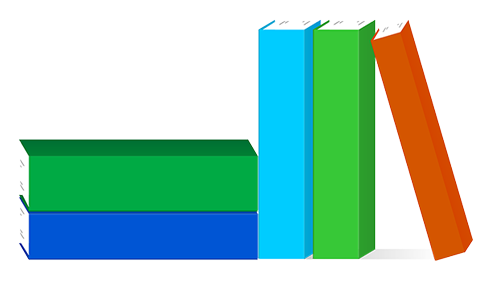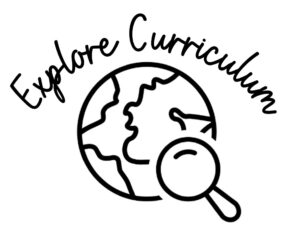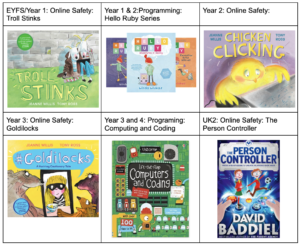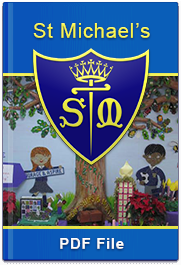“Alan Turing gave us a mathematical model of digital computing that has completely withstood the test of time. He gave us a very, very clear description that was truly prophetic.”
George Dyson – American author and historian of technology.

Follow the Twitter hashtag #STMComputing to see computing in action throughout St Michael’s, from Nursery to Year 6.
Computing: Intent

At St Michael’s we provide high quality Computing teaching through our Explore Curriculum. Underpinned by the National Curriculum, our Computing curriculum holds our children and their aspirations, the ever changing world of technology and development at its heart.
Computing is the exploration of the world around us and how technology interacts with this world. At St Michael’s, we have designed a curriculum that meets the needs of all of our children. Our Computing curriculum embraces the multicultural and devise makeup of our school. We had a wide variety of nationalities, economic backgrounds, home contexts and additional needs. It stresses the importance of each child, celebrating their uniqueness and making them the centre of their own learning. Through-quality first adaptive teaching, our Computing curriculum aims to support children at St Michael’s to reach national standards and beyond, whilst ensuring they have the specific knowledge and skills to be successful global citizens of a world where technology, which is continuously evolving and improving, underpins everyday life. Our Computing curriculum aims to instil within children a desire to conquer new learning to cultivate a genuine thirst for knowledge.
To ensure that we secure the best outcomes for our learners, our Computing curriculum is based on effective coverage, sequencing and progression from EYFS to Year Six. Each year the units of work covered are rich in vocabulary, encouraging children of all levels, abilities and backgrounds to be aspirational in their lessons. Our Computing plans assist in delivering a bespoke curriculum which builds progressively year upon year, ensuring children know more and remember more.
Computing: Aims
The national curriculum for computing aims to ensure that all pupils:
- Can understand and apply the fundamental principles and concepts of computer science, including abstraction, logic, algorithms and data representation;
- Can analyse problems in computational terms, and have repeated practical experience of writing computer programs in order to solve such problems;
- Can evaluate and apply information technology, including new or unfamiliar technologies, analytically to solve problems;
- Are responsible, competent, confident and creative users of information and communication technology.
Computing: Key Stage 1
Pupils should be taught to:
- Understand what algorithms are; how they are implemented as programs on digital devices; and that programs execute by following precise and unambiguous instructions.
- Create and debug simple programs.
- Use logical reasoning to predict the behaviour of simple programs.
- Use technology purposefully to create, organise, store, manipulate and retrieve digital content.
- Recognise common uses of information technology beyond school.
- Use technology safely and respectfully, keeping personal information private; identify where.
- To go for help and support when they have concerns about content or contact on the internet or other online technologies.
Computing: Key Stage 2
Pupils should be taught to:
- Design, write and debug programs that accomplish specific goals, including controlling or simulating physical systems; solve problems by decomposing them into smaller parts.
- Use sequence, selection, and repetition in programs; work with variables and various forms of input and output.
- Use logical reasoning to explain how some simple algorithms work and to detect and correct errors in algorithms and programs.
- Understand computer networks including the internet; how they can provide multiple services, such as the world wide web; and the opportunities they offer for communication and collaboration.
- Use search technologies effectively, appreciate how results are selected and ranked, and be discerning in evaluating digital content.
- Select, use and combine a variety of software (including internet services) on a range of digital devices to design and create a range of programs, systems and content that accomplish given goals, including collecting, analysing, evaluating and presenting data and information.
- Use technology safely, respectfully and responsibly; recognise acceptable/unacceptable behaviour; identify a range of ways to report concerns about content and contact.
Computing Reading Spine
Our Computing curriculum is designed to inspire in pupils a curiosity, and a fascination about the world around them. We aspire to cultviate children who are facinated in uderstanding how technology can be used to improve their lives. To give our pupils the chance to explore the ever changing wold of technology, we have ensured our library areas within every classroom house a selection of fascinating Computing themed non-fiction and fiction books.
Here are the books on our spine:

Computing at St. Michael's
Safer Internet Day
At St. Michael’s, we are big advocates of online safety. We believe that all of our children have the right to feel safe online at school and at home. We talk every year about how we can keep ourselves and others safe online, who we can speak to if we are not feeling safe and how the internet can impact our mental health. We take part in lots of fun activities such as live shows, Common Sense Media lessons and lots of Computing and PSHE lessons in class.
Useful Links: Computing
Resources: Computing
Just click a button below to View any document, you will then have the option to Download or Print the file. You can access all of our policies and reports on the website. Please contact the school if you would like any paper versions of our documents.

